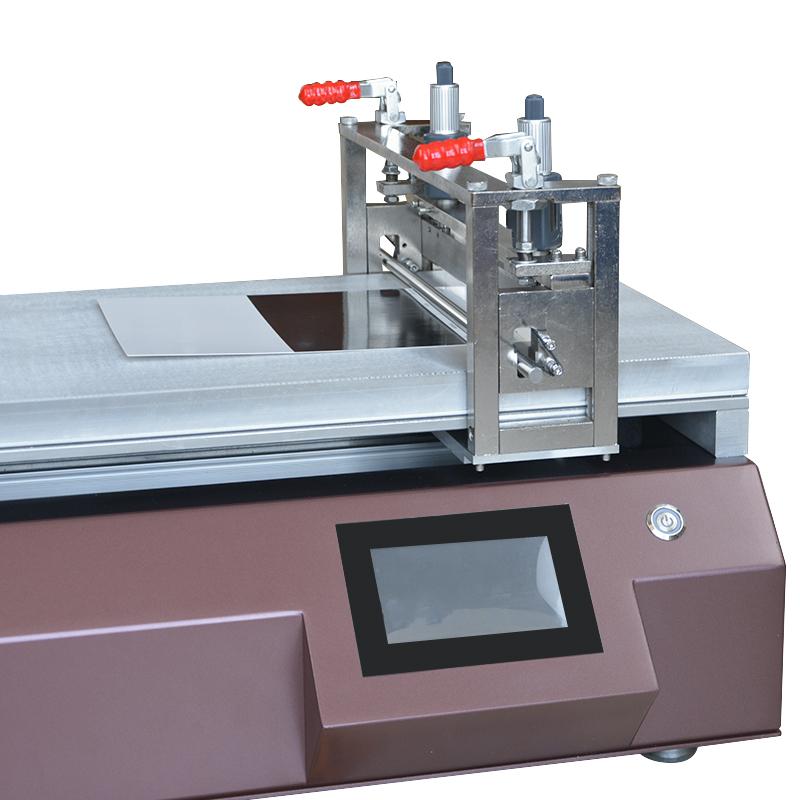การทดสอบประสิทธิภาพการทำงานของปุ่มไดอะแฟรมแบตเตอรี่ลิเธียมไอออน
ด้วยความก้าวหน้าอย่างต่อเนื่องของวิทยาศาสตร์และเทคโนโลยี, แบตเตอรี่ลิเธียมไอออน, เป็นอุปกรณ์กักเก็บพลังงานที่สำคัญ, have been widely used in mobile devices, electric vehicles and renewable energy storage fields. In the core structure of lithium-ion batteries, the diaphragm is one of the crucial components. Due to the high energy density and chemical reactions involved in the operation of lithium batteries, the diaphragm plays a key role in isolation and safety protection. ในปีที่ผ่านมา, with the rapid development of the electric vehicle market, the demand for lithium battery safety has become more urgent and important.
Lithium-ion battery diaphragm is mainly composed of microporous film, with a high degree of physical isolation performance and ion conductivity. This microporous structure allows lithium ions to pass through, but at the same time prevents direct contact between the positive and negative electrodes, thereby avoiding dangers such as short circuits. During charging and discharging, the performance of the diaphragm directly affects the stability and safety of the battery. To ensure the safety of electric vehicles and other battery applications, scientists and engineers have been working to improve and evaluate the performance of lithium battery diaphragms.
การทดสอบประสิทธิภาพการทำงานของปุ่มไดอะแฟรมแบตเตอรี่ลิเธียมไอออน
Diaphragm critical performance testing
When evaluating diaphragm performance, several key metrics are covered, รวมถึงแต่ไม่จำกัดเพียง: thickness uniformity testing, breathability testing, mechanical properties testing, thermal dimensional stability testing, electrolyte adsorption and retention testing, and electrical conductivity.
1. Thickness uniformity test
The thickness uniformity of the diaphragm is critical to the overall performance of the battery. Uniformity of thickness over a wide range is tested using thin film measuring equipment. ในการทดสอบครั้งนี้, the focus is on the thickness difference of the diaphragm in different directions (TD and MD) to ensure that it has stable thickness characteristics.

การทดสอบประสิทธิภาพการทำงานของปุ่มไดอะแฟรมแบตเตอรี่ลิเธียมไอออน
2. การทดสอบการระบายอากาศ
The permeability of the diaphragm is a factor that needs to be considered in the chemical reaction inside the battery. By testing the permeability of the diaphragm, its impact on gas exchange during the battery cycle can be assessed, ensuring adequate ion channels.
3, mechanical performance test
The mechanical properties include tensile strength, การยืดตัวเมื่อขาด, puncture strength and peel strength. These tests assess the stability and durability of the diaphragm under stress, as well as its safety under impact or external forces.
4, thermal dimensional stability test
In high temperature environments, the stability of the diaphragm is crucial. The dimensional change rate of the diaphragm under high temperature conditions is assessed by testing the thermal shrinkage rate to ensure its stability and safety at different temperatures.
การทดสอบประสิทธิภาพการทำงานของปุ่มไดอะแฟรมแบตเตอรี่ลิเธียมไอออน
5, electrolyte adsorption and retention ability test
The ability of the separator to adsorb and retain the electrolyte affects the electrolyte flow and stability inside the battery. Good electrolyte handling capacity helps to reduce the internal impedance of the battery and improve the battery performance.
6, ion conductivity test
The ionic conductivity of the separator is directly related to the charging and discharging efficiency of the battery. Testing the ion conductivity of the separator helps to evaluate the efficiency of ion transport within the battery.
Multiple performance tests of diaphragms are key to ensuring the safety and performance stability of lithium-ion batteries. ผ่านการทดสอบเหล่านี้, the stability, reliability and safety of the diaphragm in practical applications can be comprehensively evaluated, providing solid technical support and guarantee for the safety of electric vehicles and other battery applications. ในอนาคต, ด้วยการพัฒนาเทคโนโลยีอย่างต่อเนื่อง, the continuous improvement of the performance of lithium-ion battery membranes will be one of the important tasks in the field of scientific research and engineering.
